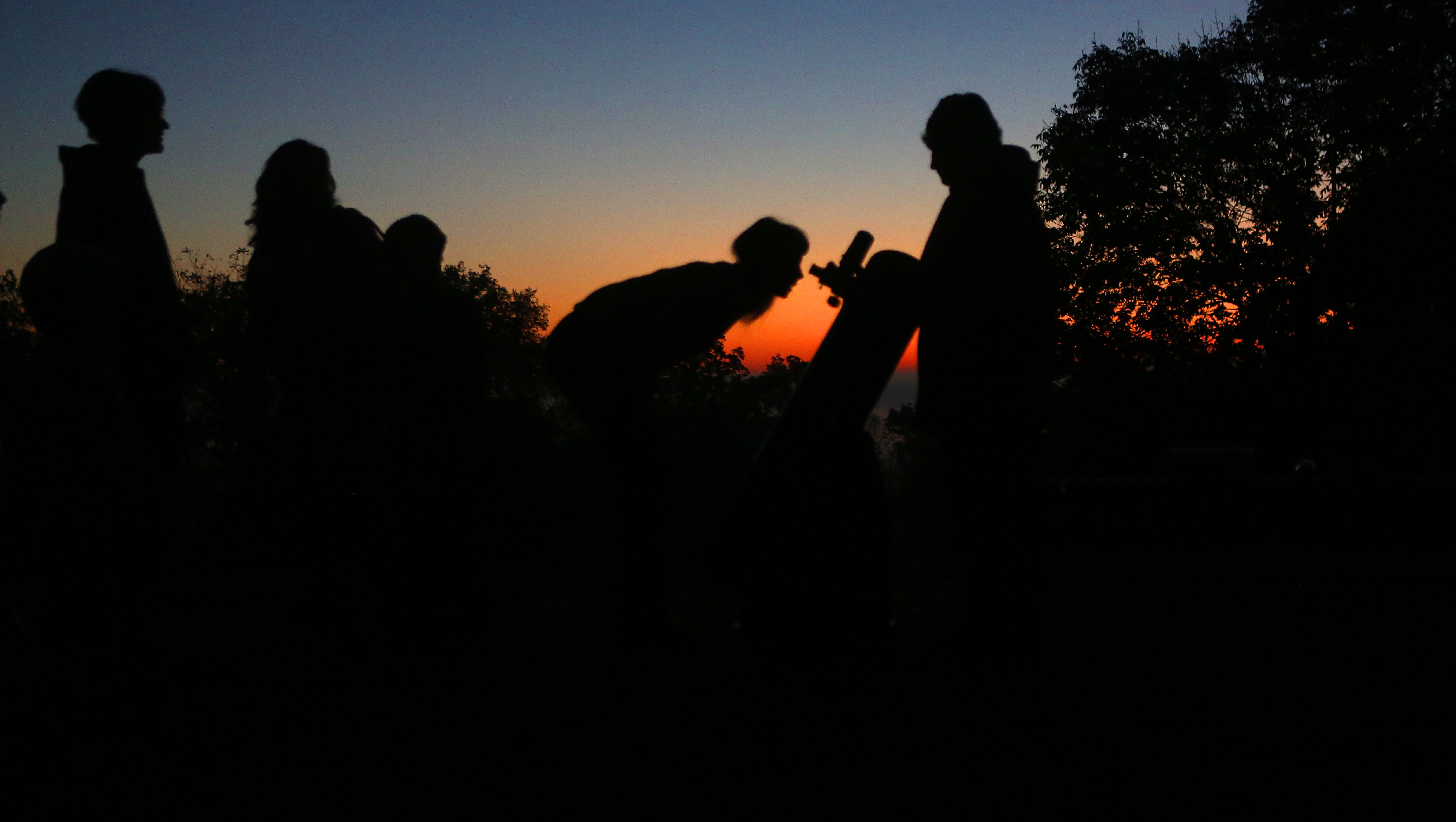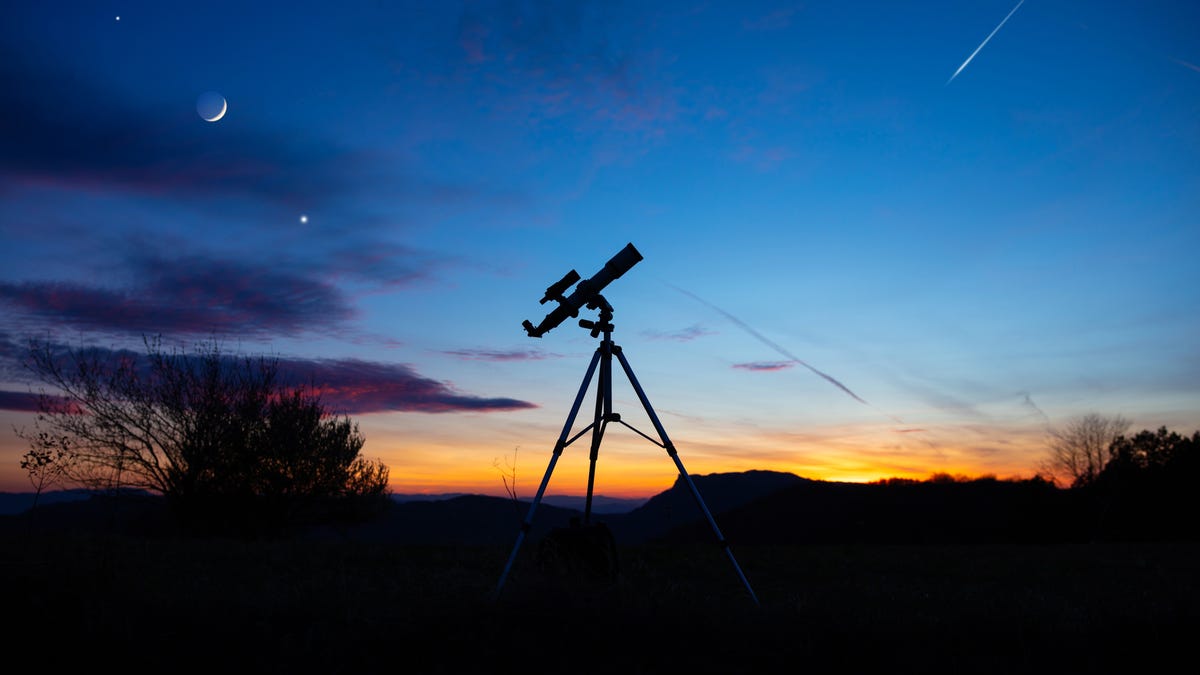
A meteor shower, eclipse and more of 2025’s must-see celestial events
2024 was a pretty great year for stargazers. 2025 has some fantastic events in store, too.
Special to The Cincinnati Enquirer
Stargazers will revel in a dazzling display as a six “planet parade” dances across the sky on Sunday, Aug. 10.
The planetary alignment, casually called a planet parade, occurs when several planets align closely on one side of the sun at the same time, forming what appears to be a “line” in the sky. Alongside the planets will also be the August 2025 full moon, expected to reach peak illumination on Aug. 9, and the Perseid meteor shower, peaking Aug. 12.
While it won’t be easy to see the full planet lineup this weekend without binoculars or a telescope, it’ll still be possible to spot at least four with the naked eye. Here’s everything to know about viewing the event, from timing and more.
What is a planet parade?
A planetary parade refers to how planets form a “straight line” and look as though they are marching across the night sky. It’s not a technical astronomy term, according to NASA, although the space agency has been known to use the phrase. While planets cannot actually fully line up in the 3D solar system, it will appear from human perspective as an alignment.
When will six planets align August 2025?
Venus, Jupiter, Saturn, Mercury, Uranus and Neptune will appear to align in the sky about an hour before sunrise on Sunday, Aug. 10, 2025. Sunrise in New Jersey on Aug. 10 will be around 6 a.m. Four of them will be visible to the naked eye — Venus, Jupiter, Saturn and Mercury —while Uranus and Neptune will only be visible with binoculars or a telescope.
How to find the planet parade 2025
About an hour before sunrise on Sunday, Aug. 10, 2025, look in the eastern horizon. Mercury will rise shortly before sunrise and stay closest to the sun in the constellation Cancer. Higher in the sky, Jupiter, the second brightest planet, and Venus, will be to the right of Mercury.
According to Starwalk, Venus and Jupiter will make their closest approach of the year on Aug. 12 — enough to cover both planets with your little finger at arm’s length.
Further to the right and highest in the sky will be Uranus (in Taurus). You’ll need at least a pair of binoculars to view it.
Further to the right, you’ll need binoculars to spot Neptune (in Pisces) and nearby Saturn (also in Pisces). Saturn will appear to have a steady, yellowish glow, setting it apart from other stars.
Even better? Below Saturn, closer to the horizon, there will the full moon. Starwalk said it will appear fully illuminated and may even look larger than usual.
Full moon August 2025
Alongside the planets will be the August 2025 full moon, called the sturgeon moon, which is expected to reach peak illumination on Saturday, Aug. 9, at 3:55 a.m. Eastern.
How can I get the best view of the planets?
To view the planets, it’s best to steer clear of city lights and head to an open area or hill, and make sure to bring either binoculars or a telescope.
Astronomers recommend a telescope with at least an 8-inch aperture at 50 times magnification to see Uranus and its rings, and 150 times magnification to see Neptune. Saturn and its glorious rings can be spotted at 25 times magnification, astronomers say.
It’s also a good idea to download a stargazer app to help you navigate the night sky.
Is a planetary parade rare?
On any given night, weather permitting, you can spot at least one bright planet in the sky, and lineups of four or five planets, seen by the naked eye, typically occur every few years, according to a Feb. 5 article by NASA’s Preston Dyches, written ahead of the last planet parade in February.
While Jupiter and Saturn are frequently spotted at night, the addition of Venus and Mercury make planetary alignments “particularly noteworthy,” Dyches said. That is because both Venus and Mercury orbit closer to the sun than Earth, meaning they orbit much quicker than other planets, according to NASA.
When was the last time 6 planets aligned?
The last time a planet parade occurred was on Feb. 28, when seven plants aligned. Another planetary alignment occurred in January, when four bright planets and two faint planets were visible in the night sky. Venus, Saturn, Jupiter, Mars, Uranus and Neptune were visible in some areas during the month. Uranus and Neptune proved more difficult to spot and required a telescope to see. The phenomenon also took place in June 2024.
When is the next planet parade?
The next planetary alignment will occur on Feb. 28, 2026, which will feature the same six planets: Mercury, Venus, Jupiter, Uranus, Neptune, and Saturn, according to Starwalk.
The next full planetary alignment featuring seven planets — Mars will join the parade — will be on Feb. 3, 2034, the site added.
Lori Comstock is a New Jersey-based journalist with the Mid-Atlantic Connect Team.
